What is Harusame Salad?
Harusame salad (春雨サラダ) is a simple dish made by mixing shredded crab and julienned vegetables with glass noodles and a thinly sliced Japanese egg crepe called “kinshi tamago.”
The ingredients are mixed in a tangy sauce with a soy sauce and vinegar base. Harusame salad is served cold, it’s a refreshing dish and perfect for hot days!
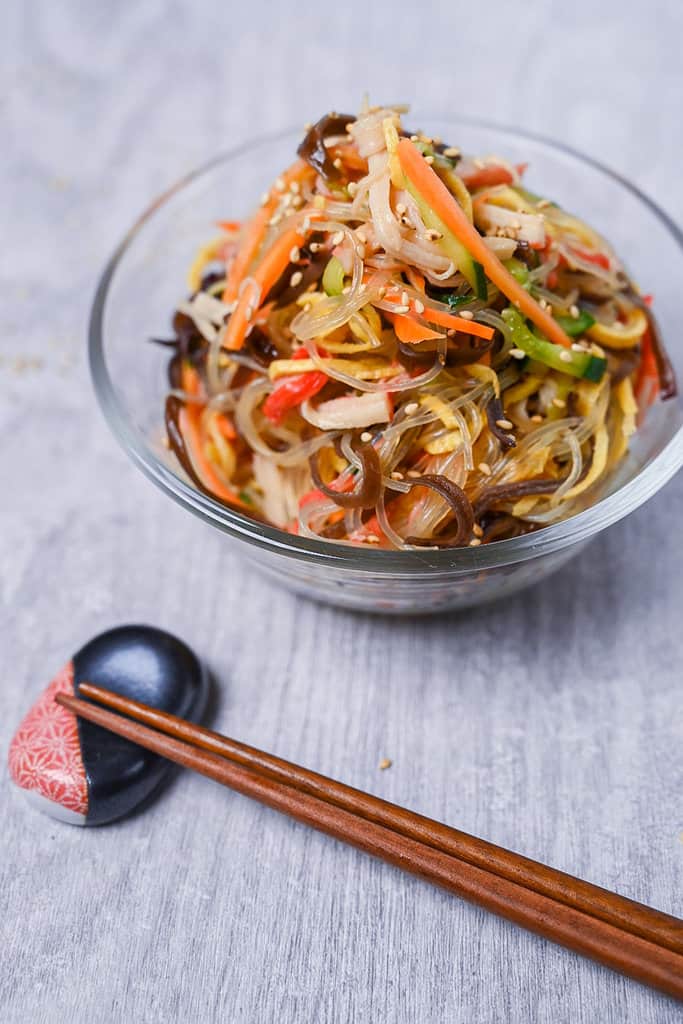
Visual Walkthrough & Tips
Here are my step-by-step instructions for how to make Harusame Salad at home. For ingredient quantities and simplified instructions, scroll down for the Printable Recipe Card below.
Start by washing the cucumber and peeling the carrot. Cut them into thin diagonal slices to increase the surface area.
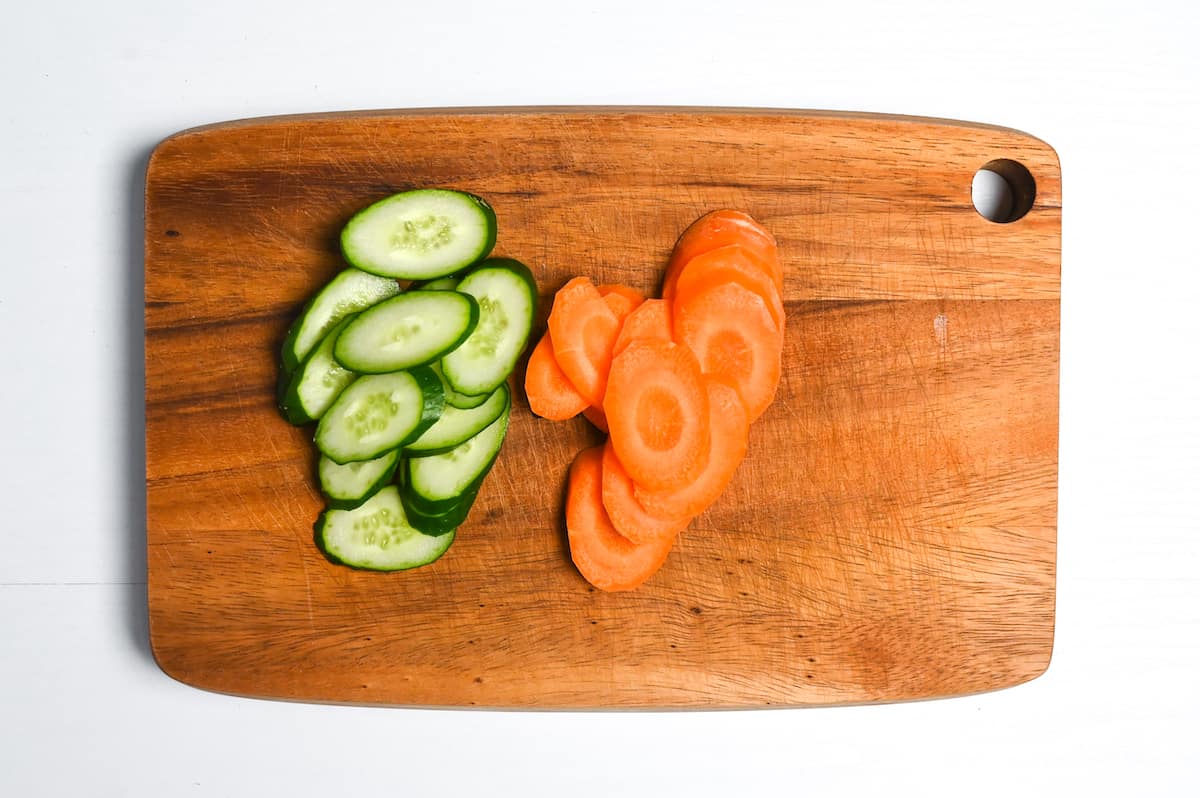
Scrape the skin off the ginger and then thinly slice. Julienne (cut into thin sticks) the ginger, cucumber and carrot about 2-3mm thick.
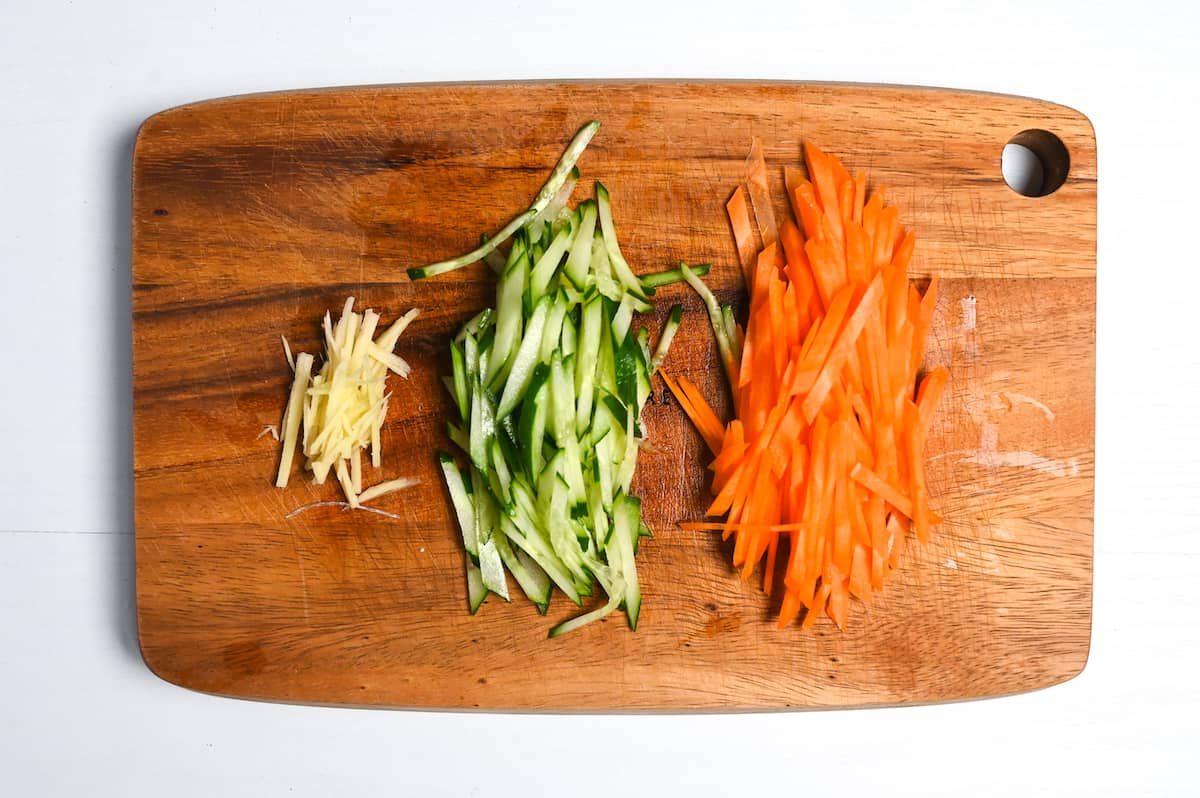
Add them to a bowl and add a sprinkle of salt. Massage the salt over the surface to make sure it’s evenly distributed, and then leave it in the fridge for 15 minutes.
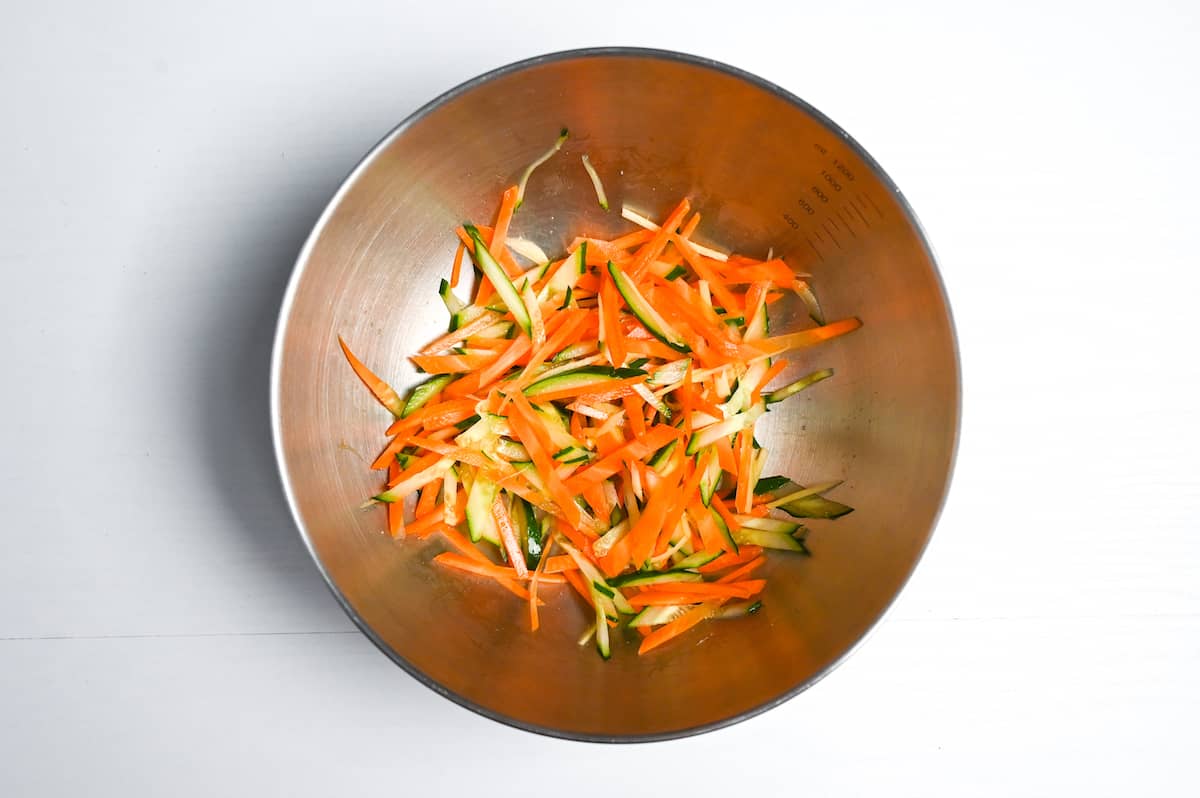
This step draws out the water in the cucumber and softens the taste of the ginger.
Boil the wood ear mushrooms for 1-2 minutes and then cut them into thin slices. If you’re using dried wood ear mushrooms, you can soak them now, then boil and slice them later.
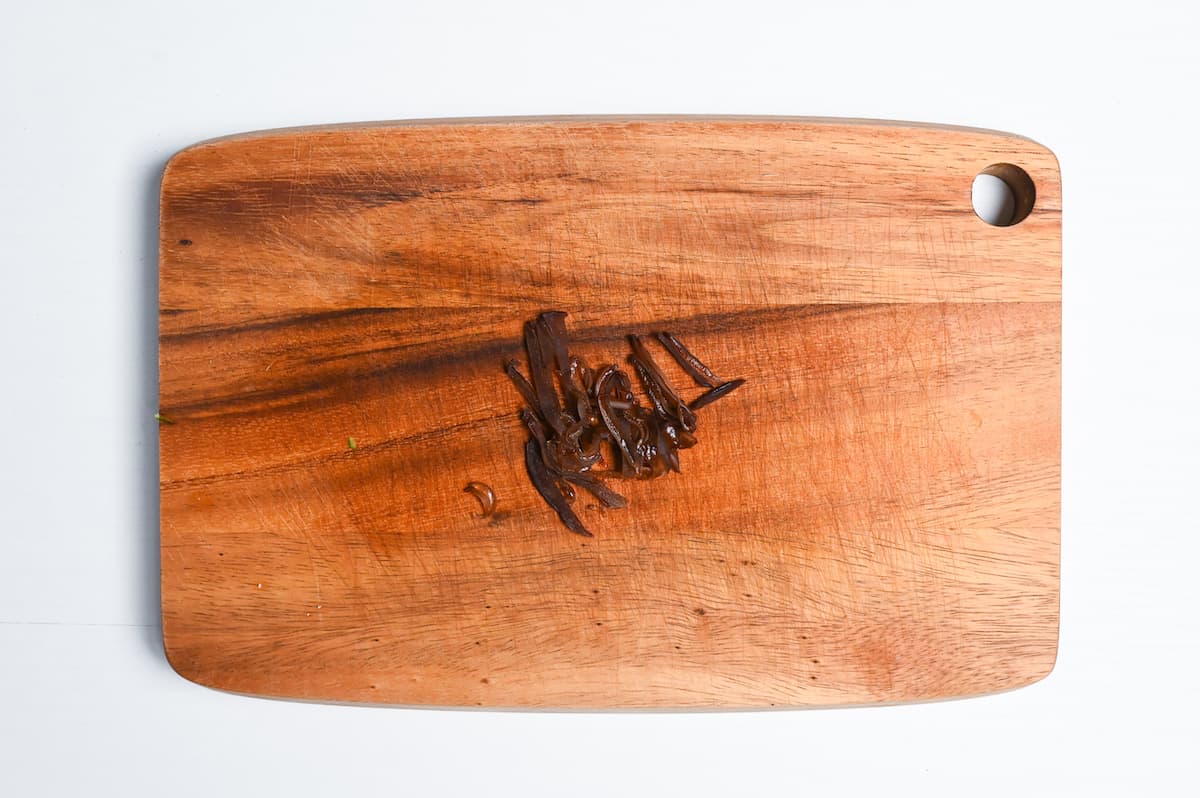
Whether you are using fresh or dried wood ear mushrooms, it’s important to blanch them for 1-2 minutes in boiling water to kill any harmful bacteria.
Take a small bowl and add the soy sauce, rice vinegar, sugar, Japanese mustard, sesame oil, sesame seeds and Chinese chicken stock powder. Mix until the sugar and stock powder have dissolved.
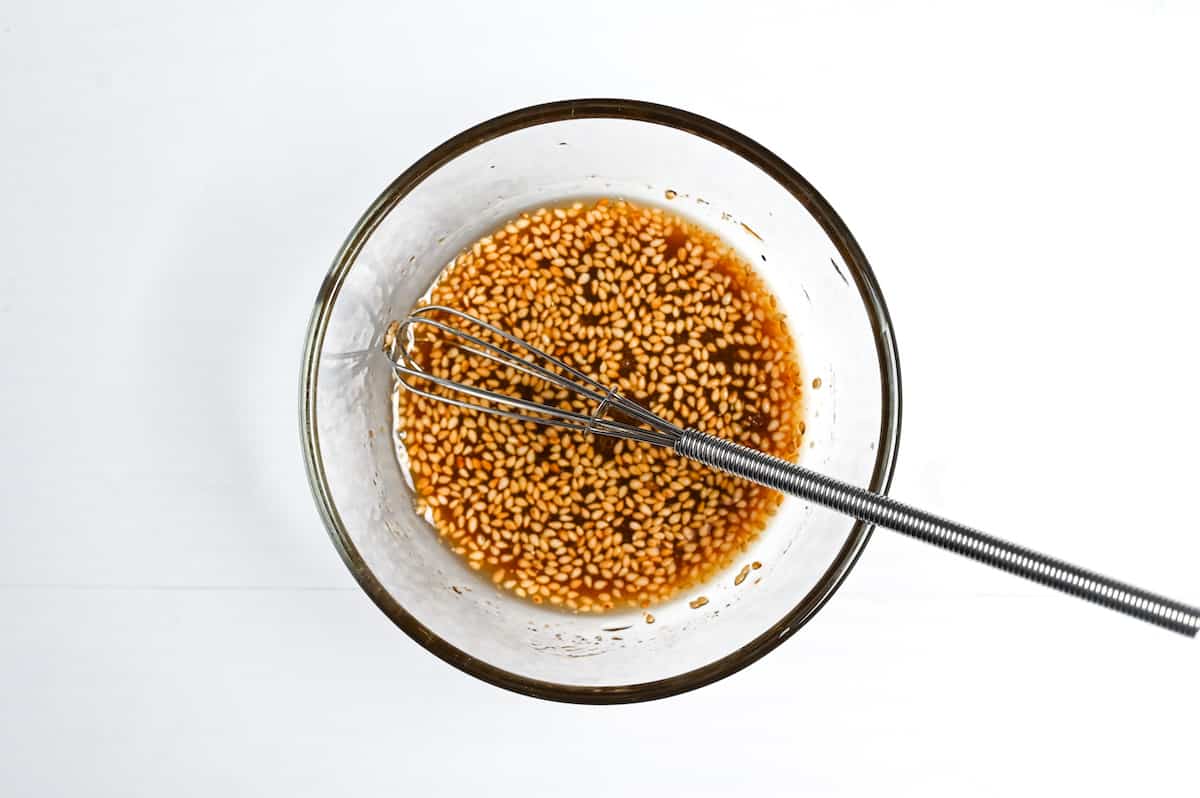
Once everything is prepared, we can make the kinshi tamago.
Take a medium-sized frying pan (I use 22cm pan) and preheat over medium-low heat. Use a paper towel to spread the oil around the pan. This will spread the oil evenly and remove any excess which will ensure the surface of the egg is cooked beautifully without spots.
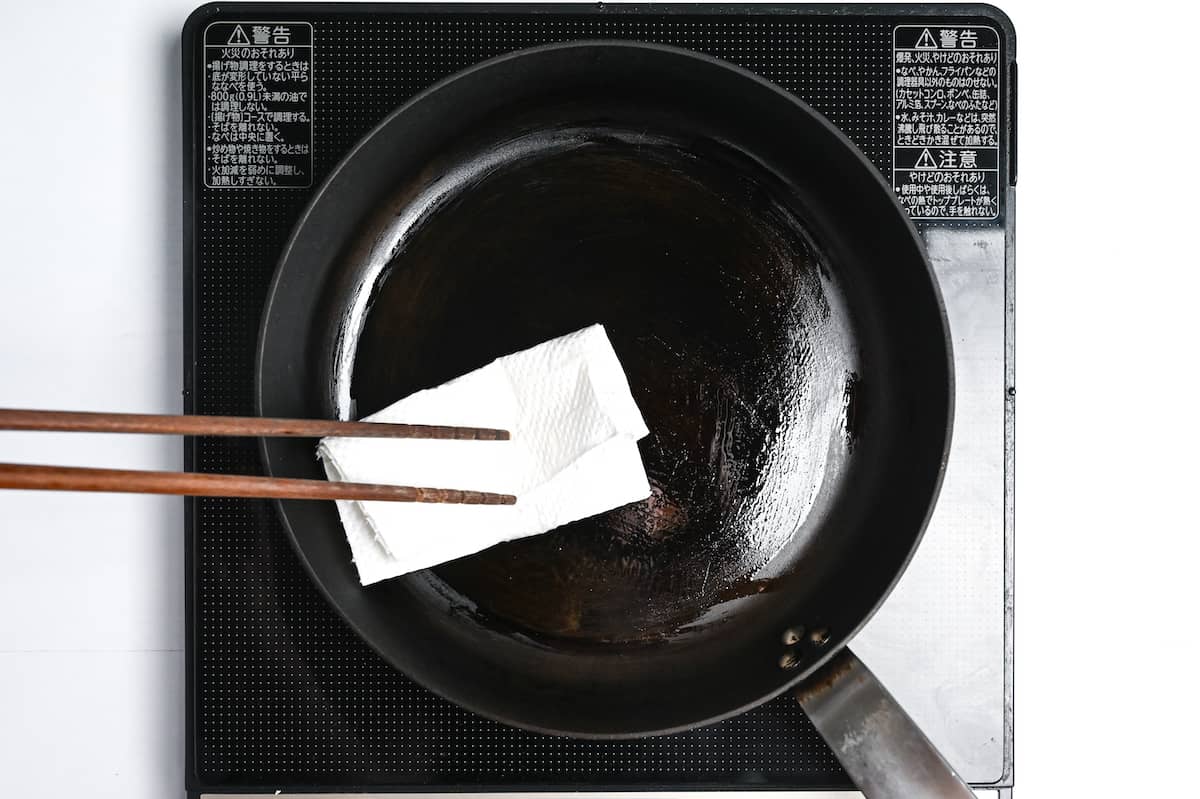
Crack the eggs into a bowl with a pinch of salt and whisk until the yolks and whites are combined.
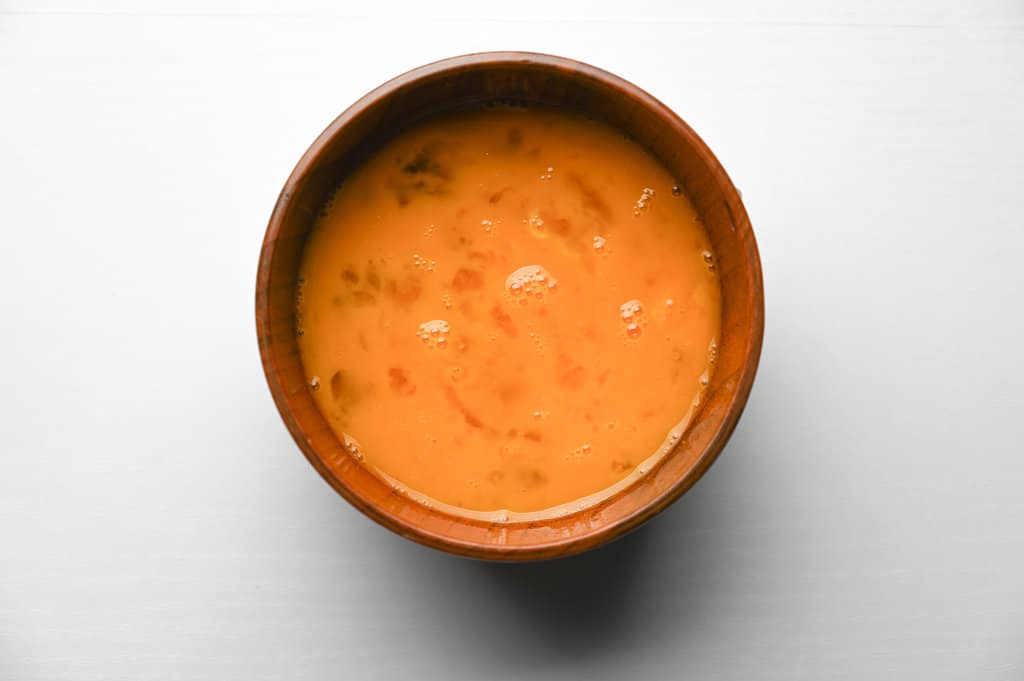
This is an important step to make a smooth kinshi tamago. Without straining through a mesh sieve, the finished kinshi tamago will be marbled in yellow and white instead of smooth yellow color. It also helps remove foam and air bubbles!
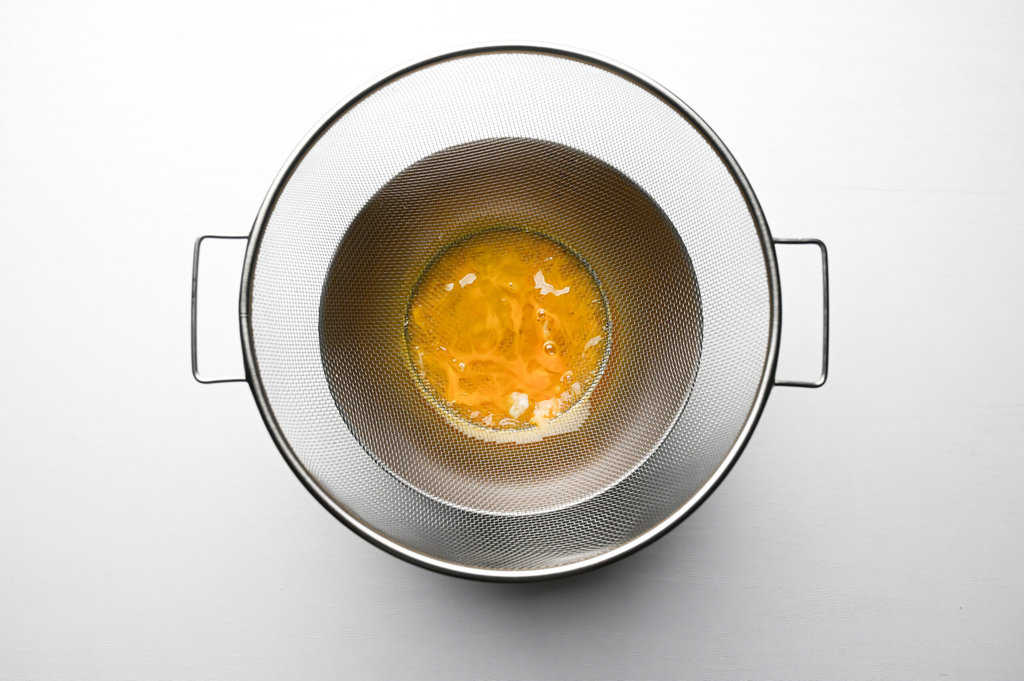
Pour the mixture into the pan, making sure it’s a thin and even layer. One 22cm frying pan will make one egg’s worth of kinshi tamago so you will need to cook them in batches (or use a bigger pan) when using multiple eggs.
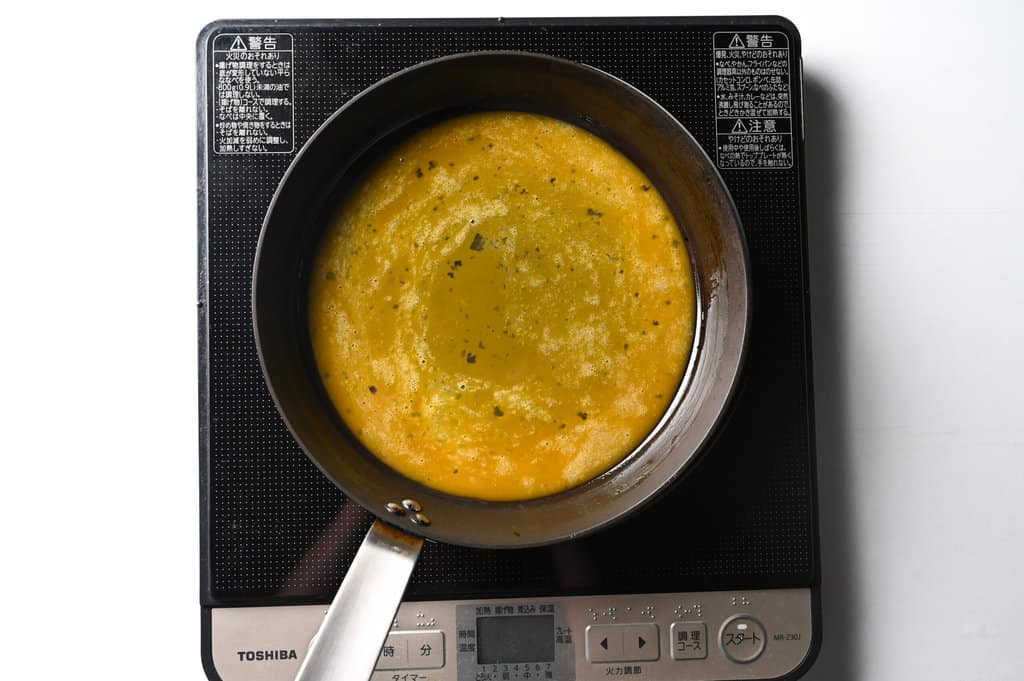
Don’t be tempted to pour all of the egg into the pan to save time; otherwise, it will become too thick!
Cook the egg until 80% done, there’s no need to flip it. This will prevent overcooking since the egg continues to cook with the residual heat. It will also prevent burning and keep the texture flexible so we can roll it for the next step.
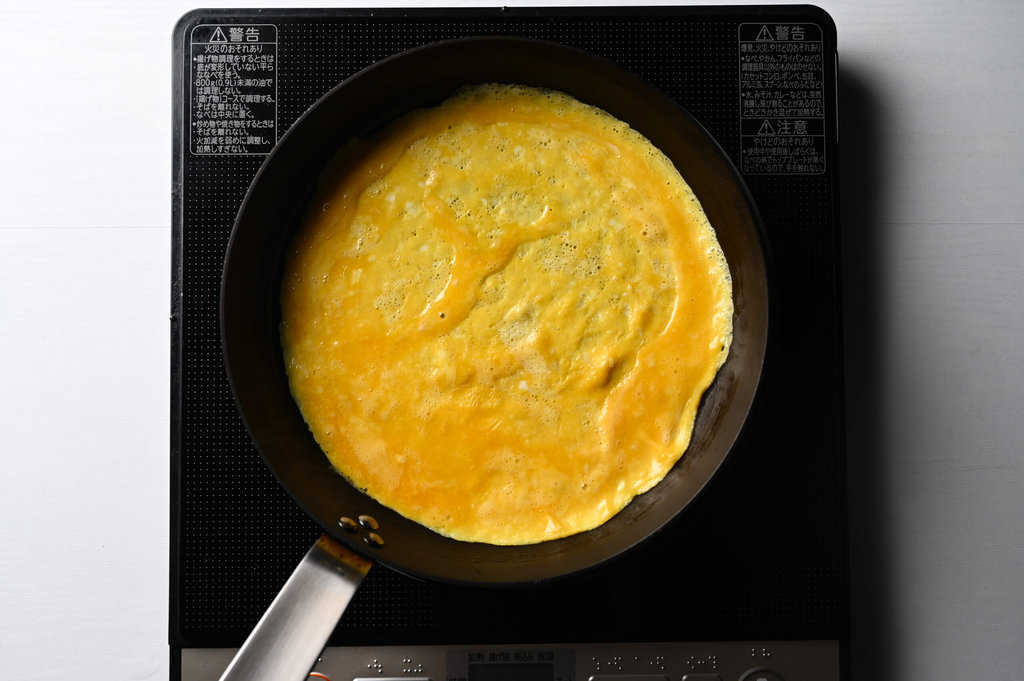
Peel the kinshi tamago out of the pan, being careful not to rip it. Let it cool for a few minutes and then roll it up and thinly slice it.
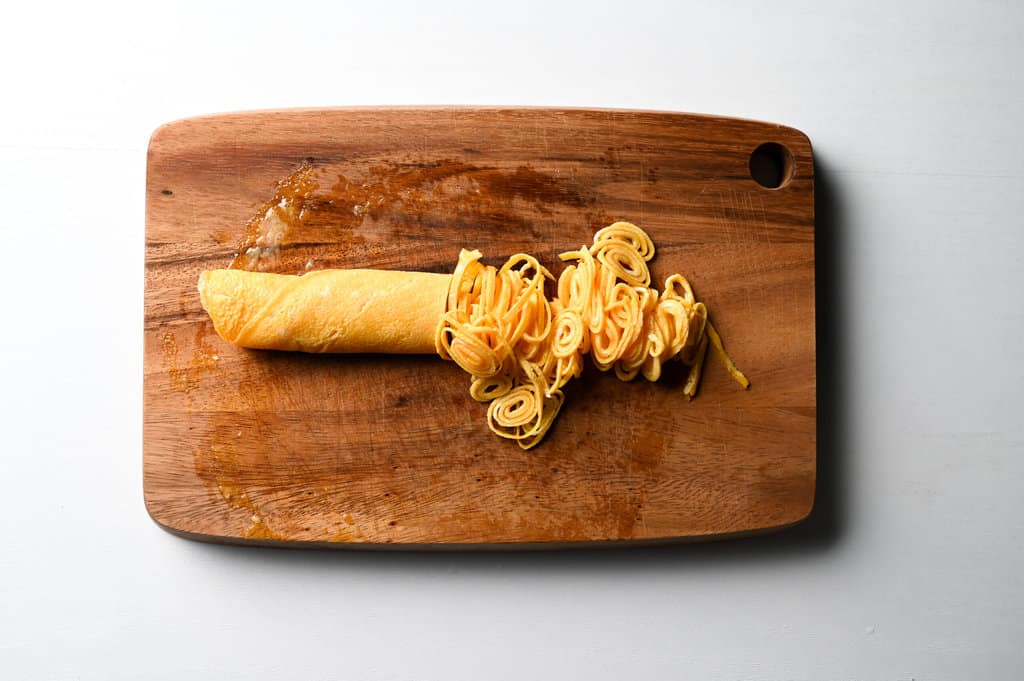
Kinshi tamago can be used in a range of salad and rice dishes. It’s also great for bentos!
Cook the glass noodles according to the instructions on the packaging. Some need to be cooked in boiling water for a few minutes, but in my case, I only needed to soak them in warm water.
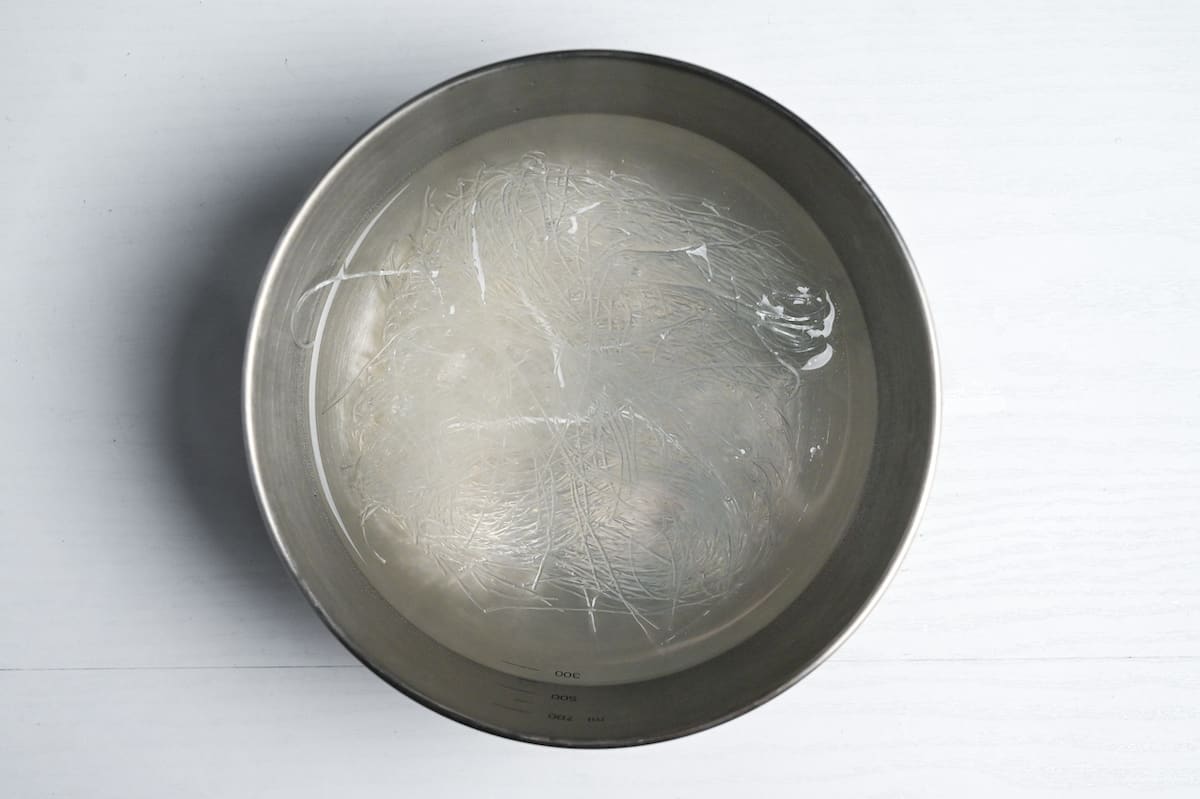
Pour the noodles into a sieve and rinse with cold running water to cool them down. You can add some ice cubes if you want them to be extra cold. (Don’t refrigerate; this will dry them out and make them stick together.)
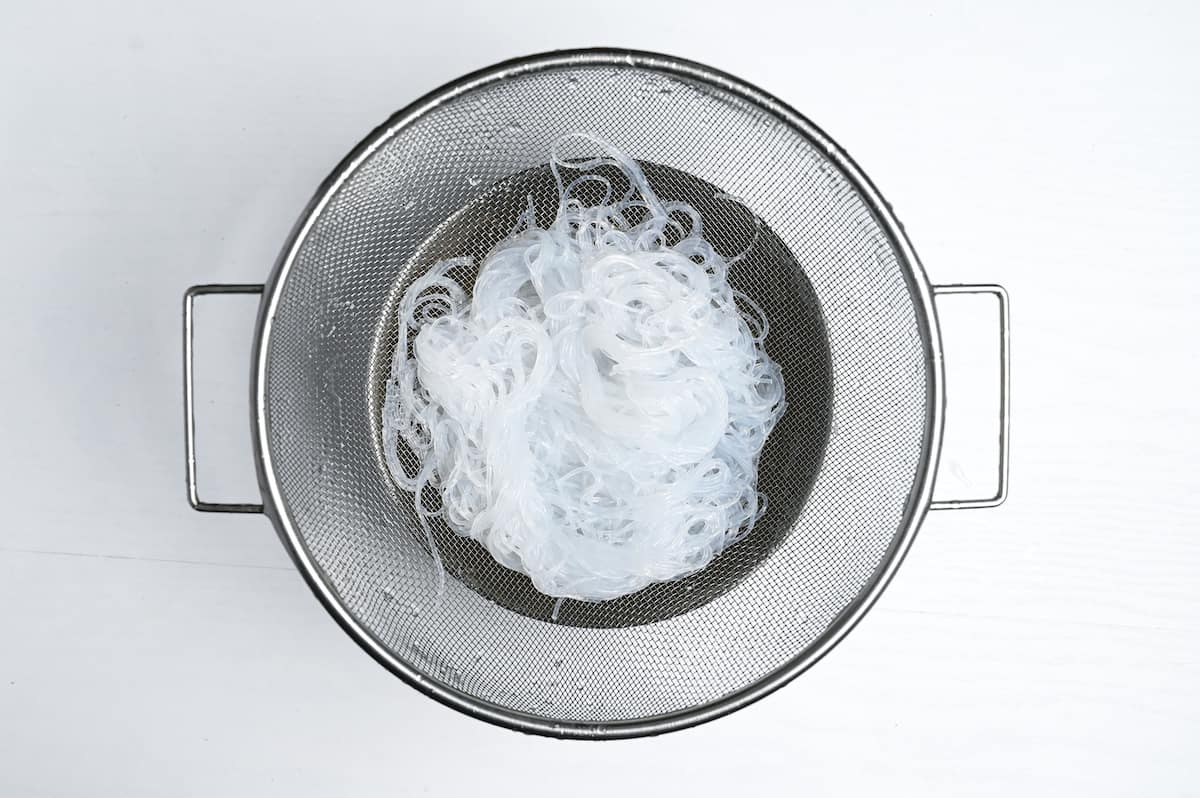
Take the bowl of cucumber, carrot, and ginger from earlier and pour out any liquid that might have accumulated at the bottom. Transfer them to a new, larger mixing bowl and add the noodles, kinshi tamago, and wood ear mushroom. Mix thoroughly, but gently so you don’t break the egg.
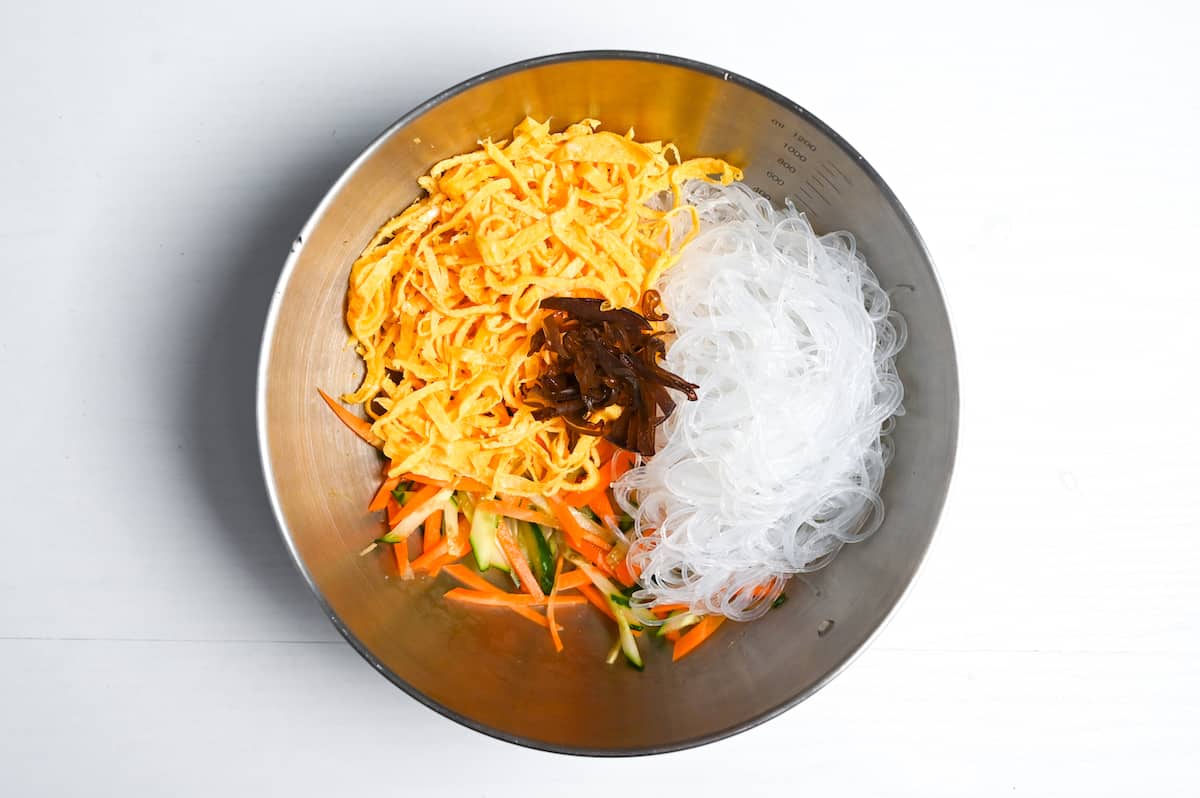
Shred the imitation crab and add it to the bowl, then pour in the sauce and mix again.
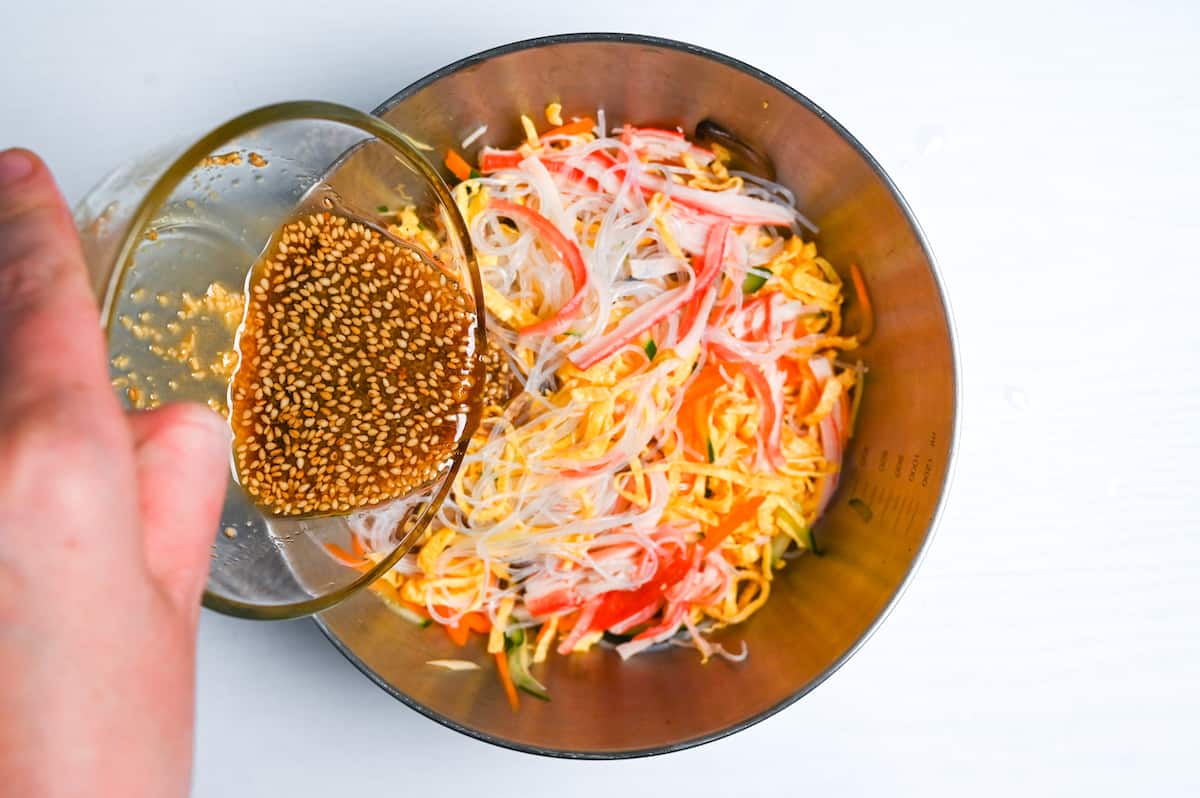
Mix until all the ingredients are evenly coated with the sauce.
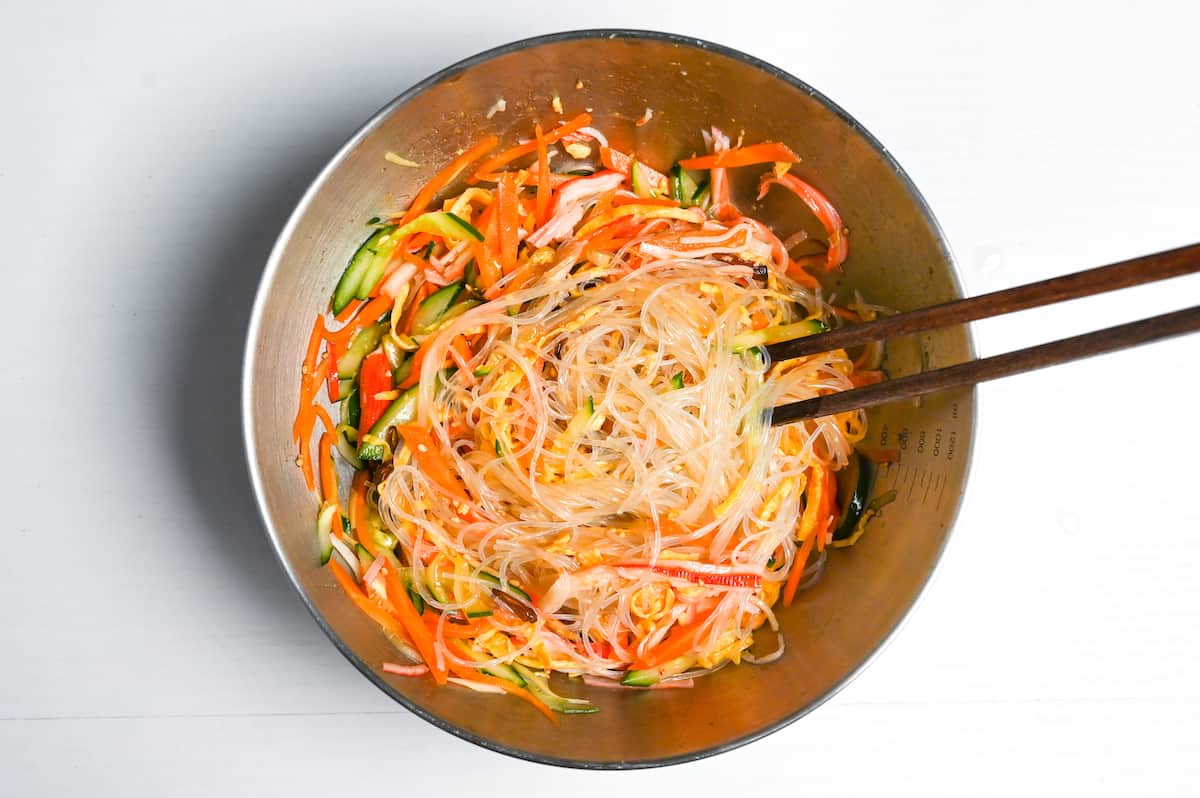
Transfer to serving bowls and sprinkle with a few sesame seeds for the final touch.
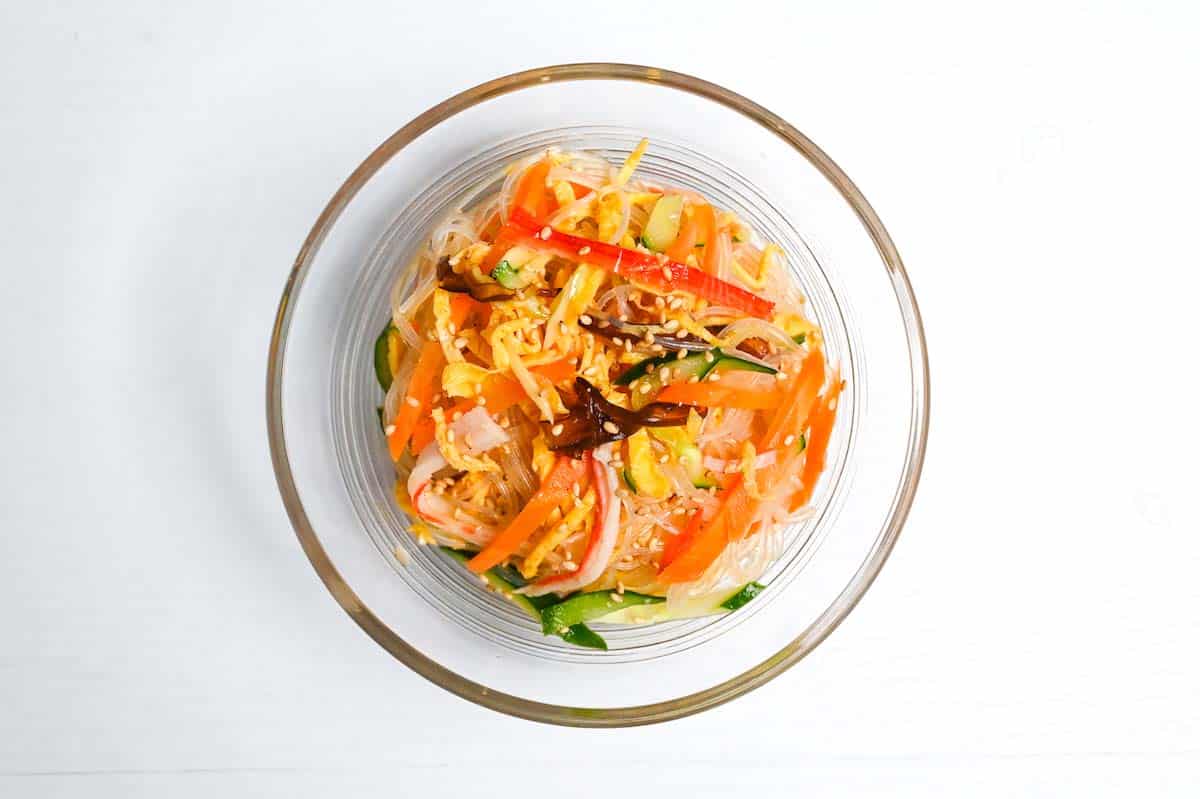
Enjoy!
Jump to Full Recipe MeasurementsHow to Store
Leftover Harusame Salad can be stored in the refrigerator for up to 3 days. The sauce will sink to the bottom, so be sure to mix before eating, and opt for an air-tight container to stop the noodles from drying out.
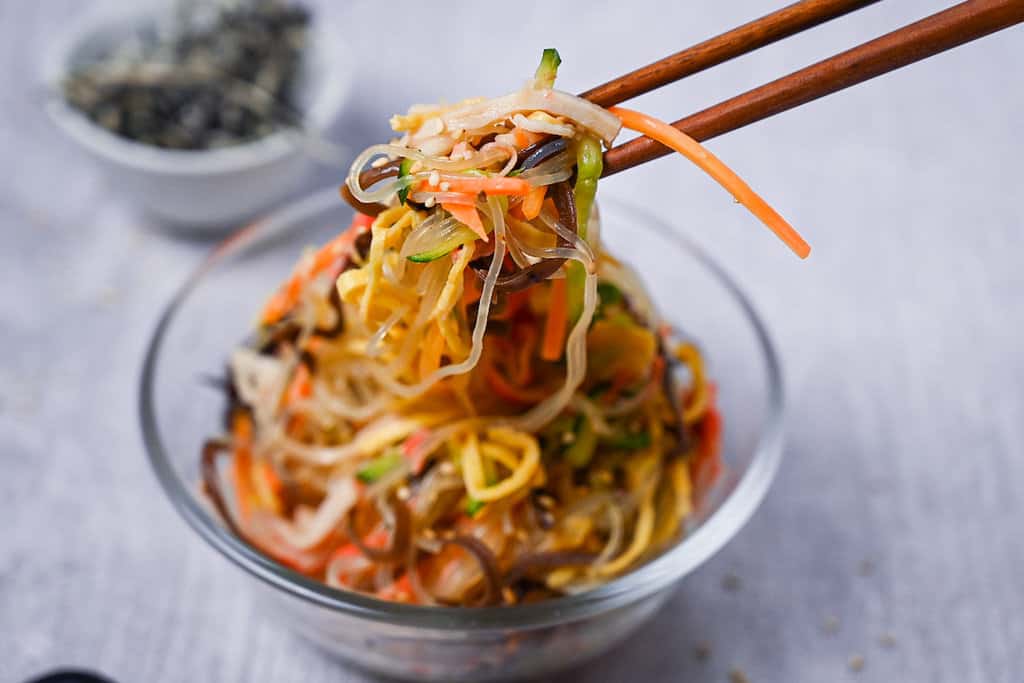
FAQ
“Harusame” or “glass noodles” in English, are a type of thin, transparent noodle originating from China. It is believed that they came to Japan during Kamakura period (1180-1336).
The kanji (Chinese characters) for harusame are 春 (spring) and 雨 (rain). The name “harusame” is said to have been given to these noodles because of their thin, transparent appearance that reminds one of the raindrops of a spring shower.
While Chinese glass noodles are generally made from mung bean starch, Japanese glass noodles are more commonly made from sweet potato starch. Harusame are thin; therefore, they cook quickly. In fact, in some cases you don’t even need to cook them at all, they can simply be soaked in warm water for a few minutes to soften them before adding them to dishes.
In Japan, Nara Prefecture is the main producer, with Sakurai and Gosho cities accounting for about 60% of national production.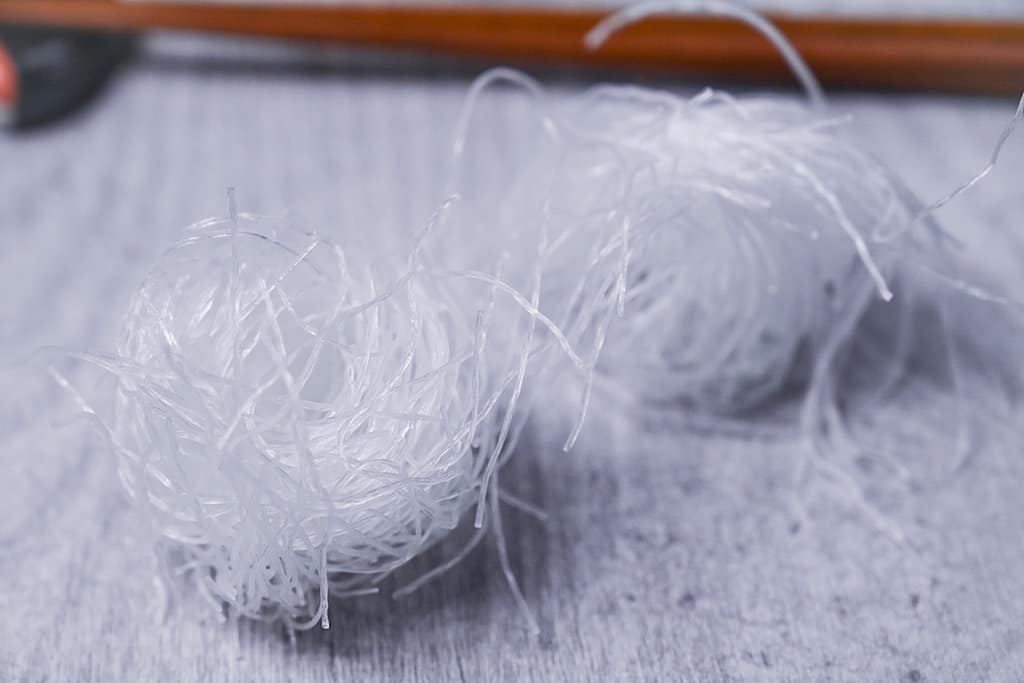
It could be because of the origin of the glass noodles, but most harusame salads in Japan are referred to as “Chuka-fu,” which means Chinese style. Like anywhere else, Chinese cuisine is one of the most popular cuisines in Japan and has a long history.
A legendary Chinese Japanese chef called Chén Jiànmín started to make a lot of Chinese dish spin-offs where he took the essence of Chinese dishes and adjusted them to suit Japanese tastes.
g are some examples of chuka dishes:
Tantanmen (ramen in a spicy sesame soup)
Ebi Chilli (shrimp in chili sauce)
Ebi Mayo (battered shrimp in mayonnaise sauce)
Subuta (sweet and sour pork)
Chinjao Rosu (pepper steak stir fry)
Japanese Chuka dishes are usually flavored with Chinese seasonings and condiments such as Chinese chicken stock (grasp), tobanjan (Szechuan chili bean paste), and tegmental (sweet soy bean sauce similar to Hoisin).
Therefore, Chuka-fu harusame salad is “glass noodle salad with Chinese style seasonings and flavor.”
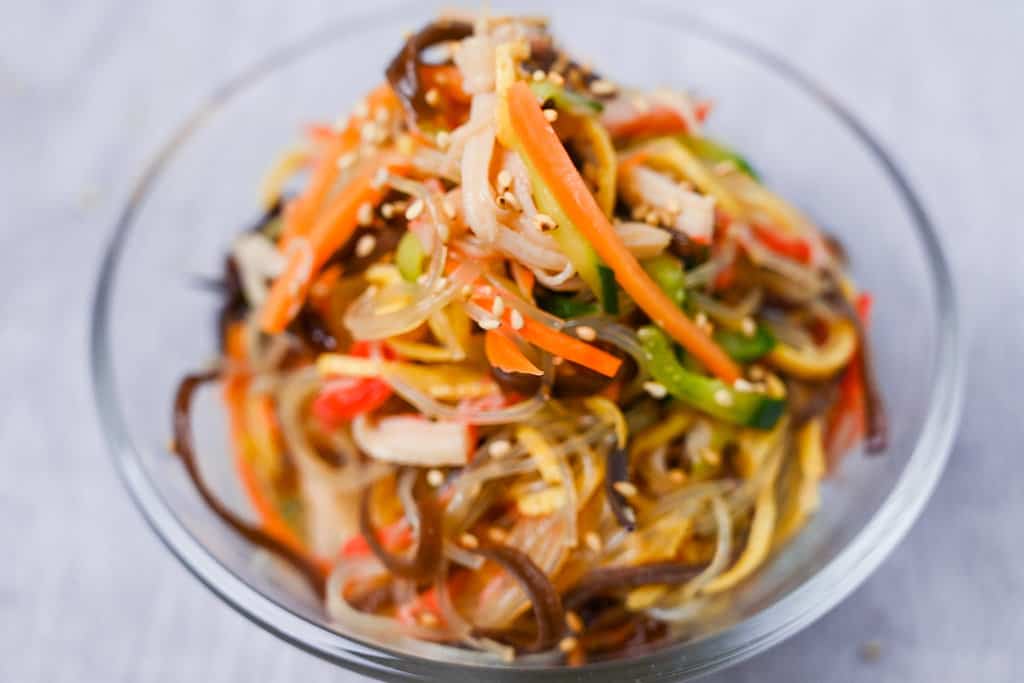
I hope you enjoy this Harusame Salad recipe! If you try it out, I’d really appreciate it if you could spare a moment to let me know what you thought by giving a review and star rating in the comments below. It’s also helpful to share any adjustments you made to the recipe with our other readers. Thank you!
More Japanese Salad Recipes
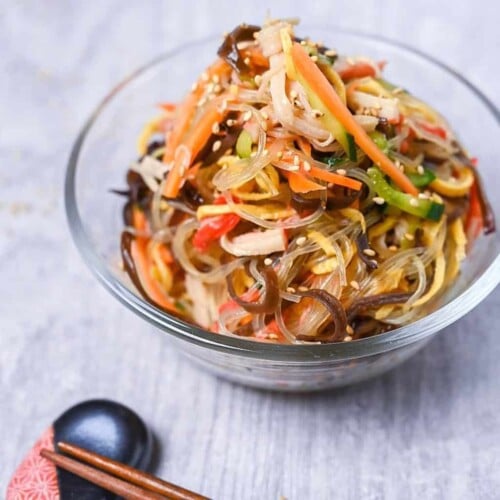
Harusame Salad (Chuka Style Glass Noodle Salad)
Ingredients
- 50 g Japanese cucumber or Persian cucumber
- 50 g carrot
- 5 g ginger root peeled
- ¼ tsp salt
- 50 g thin glass noodles (harusame)
- 1 boiled wood ear mushroom or 5g dried and rehydrated blanched 1-2 mins
- 50 g imitation crab or ham
- 2 egg + 2 pinches of salt for kinshi tamago
Sauce
- 1 tbsp Japanese soy sauce (koikuchi shoyu)
- 1 tbsp rice vinegar
- 1 tbsp sugar
- 1 tsp Japanese mustard (karashi) “Karashi” or English “Colman’s mustard” also works
- ½ tbsp toasted sesame oil
- ½ tsp Chinese-style chicken bouillon powder
- 1 tsp toasted white sesame seeds
My recommended brands of ingredients and seasonings can be found in my Japanese pantry guide.
Can’t find certain Japanese ingredients? See my substitution guide here.
Instructions
Preparing the ingredients
- Cut 50 g Japanese cucumber and 50 g carrot into thin diagonal slices about 2-3mm thick.

- Julienne the cucumber, carrot and 5 g ginger root so that they're thin match sticks.

- Transfer them to a bowl and add ¼ tsp salt. Massage until the salt is evenly distributed and then cover the bowl and rest it in the fridge for 15 minutes.

- Thinly slice 1 boiled wood ear mushroom and shred 50 g imitation crab, set aside for later.

- In a small bowl, add 1 tbsp Japanese soy sauce (koikuchi shoyu), 1 tbsp rice vinegar, 1 tbsp sugar, 1 tsp Japanese mustard (karashi), ½ tbsp toasted sesame oil, 1 tsp toasted white sesame seeds and C½ tsp Chinese-style chicken bouillon powder. Mix until the sugar and stock powder have dissolved and set aside for later.

Kinshi Tamago
- Heat a small non-stick frying pan on a medium-low setting and add a small drizzle of oil. Use a paper towel to spread the oil around the pan and remove the excess.

- Crack 2 egg into a bowl with one pinch of salt per egg and whisk until the yolks and whites are combined.

- Place a sieve over a separate bowl and pour in the whisked egg. Work the egg through the sieve using a silicone spatula or spoon.

- Pour enough egg mixture to thinly coat the bottom of the pan. You will need to cook the egg crepe in batches to avoid it becoming too thick.

- Cook until the egg is 80% done (slightly soft on the surface). No need to flip.

- Peel the egg out of the pan and transfer it to a chopping board. Roll it up and cut into 2mm slices. Grease the pan again and repeat until all of your egg mixture is used up.

Harusame Salad
- Cook or soak 50 g thin glass noodles (harusame) according to the instructions on the packaging.

- Pour the softened noodles into a sieve to drain the water and then wash with cold running water to cool. Place the sieve over a mixing bowl and add a few ice cubes to help chill the noodles further.

- Take the bowl of carrot, cucumber and ginger from earlier and drain any liquid that has formed at the bottom. Transfer the contents to a new, larger mixing bowl and add the kinshi tamago, noodles, wood ear mushrooms and imitation crab. Mix well and then add the sauce.

- Mix thoroughly until all the ingredients are evenly coated in the sauce.

- Dish up and sprinkle with a few more sesame seeds.

- Enjoy!

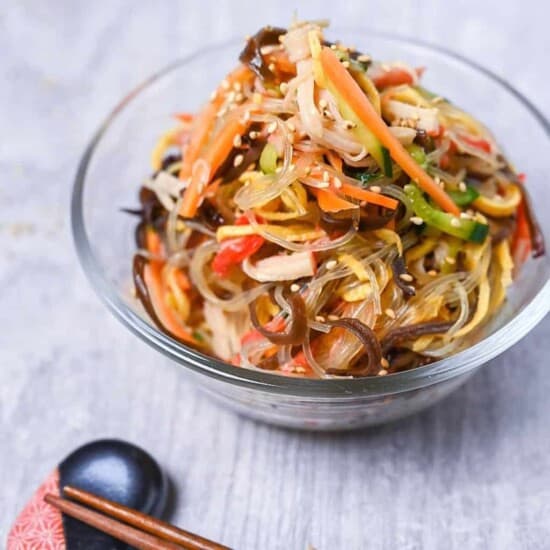


Leave a rating and a comment